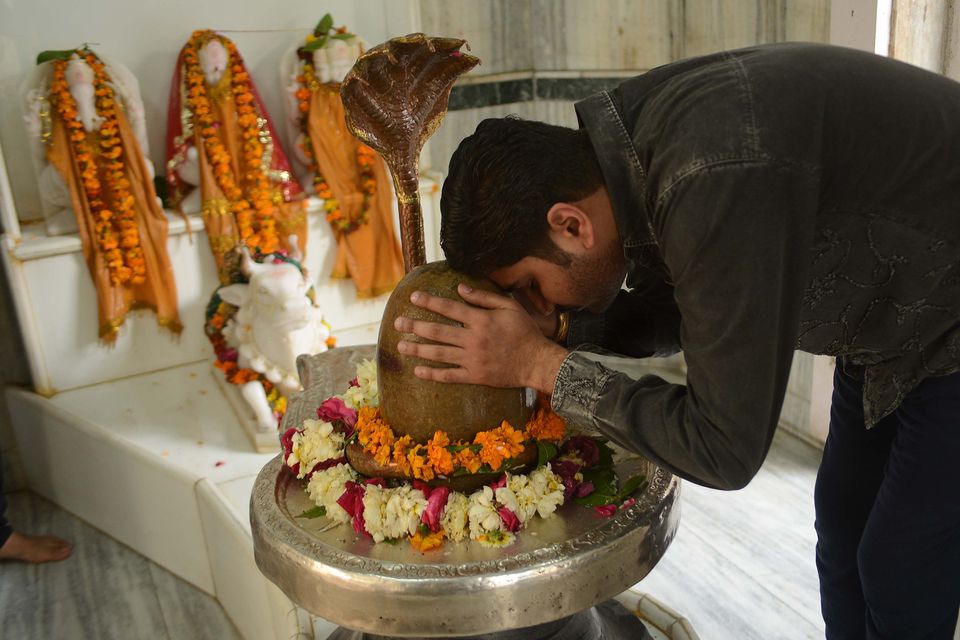
On March 10, Hindus around the world will celebrate Shivaratri (The Night of Shiva). I share these theological reflections on the occasion of this sacred festival.
For centuries, Hindus have worshiped and described God through the name and form of Shiva. The name Shiva connotes kindness, benevolence and grace. Shiva is also commonly known as Shankara, meaning one who acts unceasingly for the good of all. The many names and forms of God available in the Hindu tradition are not just expressions of India's religious and cultural diversity. These also express profound insights about the nature of God and human existence that enrich our theological understanding. I want to suggest four ways in which the name and form of Shiva speak relevantly to us about divinity and the meaning of human life.
The first insight arises from the contrast between the iconic representations of Shiva and those of God as Vishnu. Although, both may be seen as forms of the one God, there are unmistakable differences. Icons of Vishnu typically represent him in the symbols of royalty, power and affluence. He wears a crown on his head, jewels around his neck, golden earning on both ears, and resplendent robes. Shiva, on the other hand, wears nothing but a loincloth; his only "jewels," are snakes and rosaries. The icon of Shiva attracts us by its stark simplicity, asceticism and lack of adornment. The eyes of Vishnu are open, looking out to the world; the eyes of Shiva are half-closed in meditation.
The representation of Vishnu with the symbols of kingship and splendor properly emphasizes the nature of God as the omnipotent source, lord and sustainer of creation. The icon of Shiva, empty of all trappings of power and wealth, reminds us that the meaning of human life is be found in who we are and not in what we own. Although wealth and power are important for human wellbeing, these are impermanent, unpredictable and ultimately fail to satisfy the thoughtful person. Our human worth is an intrinsic one that has its source in the divine that exists at the heart of everyone. Shiva's half-closed eyes point to the condition of being awake to this divine reality.
The second insight about Shiva arises from his association with time and change. As a form of God, Vishnu is associated with preservation and stability, the familiar and the predictable that afford us constancy and continuity. Shiva reminds us that even as we value and seek stability, change is inevitable. On his flowing hair, Shiva wears the crescent moon, the symbol of time, reminding us that there is no creation without movement and motion and that there can be no peace without our acceptance of impermanence. Shiva invites us to see the positive possibilities in change. Without change, our sons and daughters will not grow into beautiful young men and women, the seeds that we plant will not blossom into plants and winter will not come to an end.
The third insight about Shiva is a challenge to our own expectations of where and in what forms we may discover divinity. The city of Varanasi (Banaras) is one of the most sacred locations in Hindu geography. It is famous for its cremation grounds. Elderly and terminally ill Hindus travel to Varanasi in the hope of dying within its sacred precincts. Traditionally, death is an event of in-auspiciousness and ritual impurity; cremation grounds are avoided, as well as contact with a deceased body. Varanasi, however, is the holy city of Shiva and the location of one of the most famous Shiva temples. Shiva is described as frequenting the cremation grounds, dressed in beggarly attire and smearing himself with the ash of the cremation sites. The point seems to be that we must be careful not to associate God only with beautiful temples and richly adorned icons. Although we teach God's omnipresence, we are more reluctant to discern God in places associated with death and suffering. Shiva reminds us not to place limits on divine reality. Our boundaries, our notions of purity and impurity, are not Shiva's own. His association with the place of death dramatically states this fact.
The fourth insight about Shiva is concerned with our consciousness of our environment and our need to be good stewards of the earth and its resources. The most popular representation of God as Shiva depicts him as residing in a Himalayan abode in the midst of lush and verdant vegetation. The bull, Nandi, sitting happily next to Shiva and the snakes playfully adorning his neck and arms present us with a portrait of natural harmony. The Ganges River is shown as flowing from and through Shiva's luxuriant hair, suggesting that nature's bounties are divine gifts. We are more likely to abuse nature when we disconnect the natural world from its divine origin and strip it of sanctity. The icon of Shiva, placed firmly in the midst of nature speaks, of our interdependence with and our inseparability from the natural world.
One of the compelling forms of Shiva represents him as Dakshinamurti, the teacher of wisdom. He is seated under a banyan tree, surrounded by eager students, As a teacher, Shiva is eternally young, suggesting that his teaching is a continuous process for those of us who are open to learning. As we worship Shiva on Shivaratri, let Shiva also become our teacher. May we learn from him the value of detachment, the positive possibilities in change, the ability to see divinity where we least expect, and a renewed value for nature as a sacred gift.
Click through to see photos from Mahashivatratri celebrations:
